Ever since the introduction of the tank into modern ground combat, it has been a bold symbol of armies of all countries. Its beginnings based on that of a farm tractor, the tank now looms large over battlefields as a worthy foe, and is in many cases the backbone of most modern day ground maneuvers. The tank was first developed by the British and the French during World War I. These tanks were very slow (road speed was about 5 mph) and were used only for infantry protection. Although they had some success in the battlefield, they failed to penetrate German lines. After World War I the Germans used the inter-war period to develop tank technology and tactics. The results of their efforts showed in the Blitzkriegs of 1939 in Poland and of 1940 in France. The tactics involved using newer, faster models of tanks that operated as a single unit, instead of just as a shield for infantry. In 1943 the Russians turned the tables at the Battle of Kursk, at the time the largest tank battle in history where almost 4,000 Russian tanks stopped a German offensive of more than 2,000 tanks. This battle was a turning point in the war as it ended the German offensive capability in the East. Its status as the largest tank battle in history lasted until 1973, when the Israeli army counterattacked against the Egyptian offensive in the Sinai during the Yom Kippur War. Interesting about this battle was the fact that the Egyptians used Russian tank tactics involving massed maneuver, while the Israelis used essentially the German blitzkrieg technique, which emphasized single-unit maneuver. The Israelis won this battle. Most recently the tank dominated in Desert Storm where United States tanks once again proved that maneuverability is more useful than massing, and the Western tanks proved dominate over the Russian.
The tank has developed in many different areas since its introduction during World War I. The speed, range, lethality, survivability, and the ability to communicate with or control a tank on the battlefield have all improved greatly, but there have not only been advancements in actual tanks when it comes to this kind of warfare. Anti-tank warfare has also seen great improvements in many of the same areas like weapon range and lethality.
One of the most remarkable areas of improvements has been that of speed. During World War I where tanks first saw battle, the maximum speed of a tank was around 5 kph, and that is strictly road speed. In the country, the top speed it could hope to attain would be roughly half of that. Nowadays the German tank known as the Leopard 2 which is in service with many armies, can attain a maximum road speed of around 72 kph, and a cross-country speed of 35 kph. This is similar to the speed of the French Leclerc except in the maximum cross-country speed it can achieve. Like the Leopard, the Leclerc can attain a maximum road speed of 72 miles per hour, but because the Leclerc weighs 3200 Kg less than the Leopard, it can attain a maximum cross- country speed of only 55 kph. The main difference between the two lies in the fact that the Leclerc houses a crew of three soldiers, while the Leopard can transport and hold up to fourteen. A third tank, the Israeli Merkava has a road and cross-country speed which is roughly the same, with a maximum of 65 kph on the road, and 60 kph in the country. Another factor that determines the speed of a tank is what and where it is to be used. The Merkava is an Israeli tank so most of the combat to be had is in the desert, so it isn specifically tailored to the road. These speeds are a vast increase over the earlier models of tanks; they not only go up to about 20 times faster than the first tank, but they can also cover a wider area as a result.
The operating range of tanks has also increased markedly. World War I tanks had a range of perhaps 50 miles. The German Wehrmacht premier tank at the outset of World War II, the Panzer IV, had a cross-country range of 80 miles. The tank of today German Army, the Leopard II, one of the best tanks in the world, has a range of 310 miles. Such range means that tank units are less restricted in their operating radius and less tied down to fixed fueling bases. Advances in communication have also allowed for a much larger range.
Lethality, the ability to killor disable other tanks, has also improved by orders of magnitude. Tank cannon have increased in caliber and throw weight from 75mm cannon in the Panzer IV of WWII to 120MM in the Leopard II, U.S. M1A2, and other front line tanks of today. Effective range is further increased with the advent of new optical systems. They can detect enemies as well as allies at greater range, enabling better targeting. Infrared systems enable the detection of heat signatures, and laser targeting gives soldiers the ability to self-aim and release laser-guided explosives and munitions. The laser is aligned with the fire-control computer, so the soldier uses his internal targeting system to aim at targets. After the target is illuminated with the laser, its guided munitions are released and follow the laser beam right to the target. This technology allows for extremely accurate targeting at longer ranges.
Survivability is another area in which huge leaps have been made. Armor became progressively heavier and more sophisticated over the years. Today, most modern tanks use depleted uranium, an extremely dense metal, as primary armor. It is almost impervious to all but the heaviest standard shells. Additionally, Explosive Reactive Armor (ERA) is used as an add-on to the primary armor. The tank primary armor is covered with an additional layer of tiles of ERA, which is an explosive sandwiched between steel plates. The explosive in the armor is initiated due to the impact of a warhead upon it, causing it to explode outward, opposing the warhead that has just hit it; the result is minimal damage to the tank. ERA is a very recent development that saw its first significant use during Operation Desert Storm. ERA is being used on an ever-increasing scale since then to provide protection against both kinetic and chemical warheads.. Since ERA is tiled on to the (generally) flat surfaces of a tank it does not provide optimal protection. There are areas of the tank the ERA does not cover; many times these areas include the hull sides and rear, as well as the rear of the turret. These spaces are now the tank Achilles Heel; the enemy can disable a tank with a hit in these areas. During the first month of the Chechnya fight in December 1994, 62 Russian tanks were destroyed, all but one of them by hits in areas not protected by reactive armor. (Biass, 56) As proved in that instance, it is hard, but not impossible to get around ERA. Another invention that deploys aspects of the ERA technology is that of the Russian radar systems Drozdand Arenawhich use radar sensors to detect incoming missiles, and send out grenades to engage such threats. Such devices are very expensive and not easy to come by, but soon these devices will become the norm, and defense technology will develop even more. Currently, the US is researching the development of fusing sensorswhich will be able to provide a stand-off capability for projectiles and missiles allowing these to attack targets protected by ERA or other protection systems.
All modern day tanks are also equipped with laser-warning receivers (LWR), providing an additional degree of survivability. These give visual or acoustic warnings that incoming laser energy has been detected, basically telling the tank that they have been targeted. More sophisticated LWRs can give an indication of the nature of the threat, and can also initiate smoke grenades.
Operating range is also affected by the ability to communicate. Communication with air support and other tanks through the use of satellites and other new communications devices, is now much more reliable than it was even a decade ago. This enhanced communication allows for single tanks to find out where they are, where the other tanks in their unit are, and where the enemy is, as well as the structure of the land. This, in turn, enables them to maneuver with confidence over a greater range. At the same time, brigade, group and corps commanders can use enhanced communications technology, including both cellular and satellite technology, to have a better picture of the battlefield and thereby be better positioned for tactical and strategic decision-making involving tank companies and battalions.
Tanks have evolved in numerous ways since their introduction during World War I, and will continue to evolve until they are no longer needed for ground warfare, as long as the technology involved continues to evolve. The blitzkriegs of World War II and the Yom Kippur war both demonstrated that tank maneuverability was the key to ground warfare success, so many technologies have developed to increase the maneuverability of the tank. The speed of a modern tank as compared to the earliest models has increased 15 fold on both road and cross-country surfaces. The range of tanks has also increased over the past century. Tanks can now go up to around five times farther than they could on the same tank of gas, which has allowed for an increased operation radius, which is widened even more by the implementation of new communications systems. The lethality coupled with the survivability of tanks has allowed for a better battlefield record and the ability to easily upgrade most tanks (e.g. the panels of ERA that can be placed on different sections of a tank) has allowed for a longer life. Tanks are on the leading edge of technology and are an essential part of today armies.
Books on Military Vehicles
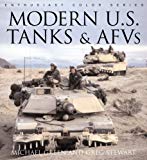 Modern U.S. Tanks and AFVs |
Conceived during World War I, tanks still play a crucial role on the modern battlefield providing excellent mobility, sophisticated communications, lethal firepower, and effective armor protection. Together, these assets provide the shock effect necessary to close with and destroy the enemy in most any condition.
Modern U.S. Tanks & AFVs examines the development, capabilities, and service histories of some of the most important and interesting tanks, armored fighting vehicles (AFVs), wheeled armored firepower, and indirect armored fire-support vehicles used by the U.S. military today, including: amphibious assault vehicles (AAVP), the full range of M1 Abrams tanks, Bradleys, armored Humvees, and Strykers. In typical ECS fashion, color photographs depict each type in training exercises. There will also be discussions of how the 1999 “Army Vision” transformation strategy calling for lighter and more maneuverable armed forces precipitated the development of some of the weapons covered. |
 Jane’s Tanks and Combat Vehicles Recognition Guide, 3e (Jane’s Tank & Combat Vehicle Recognition Guide) |
The Essential Guide to All the World’s Tanks and Combat Vehicles. A fully illustrated encyclopaedia of all modern military vehicles in service today. Includes tanks, personnel carriers, reconnaissance vehicles; self-propelled guns and self-propelleled anti-aircraft systems. |
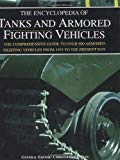 The Encyclopedia of Tanks and Armored Fighting Vehicles: The Comprehensive Guide to over 900 Armored Fighting Vehicles from 1915 to the Present Day |
Warriors have long sought to combine protection and mobility in combat, from ancient chariots to medieval knights and armored wagon. It was the development of the internal combustion engine that allowed a vehicle to possess both features on the battlefield. The Encyclopedia of Tanks and Armored Fighting Vehicles is a definitive guide to over 1500 armored vehicles that have emerged from the first gasoline engine to the present day. In 1916, during World War I, the tank made its debut on the Western Front for the British, and the face of warfare changed almost overnight. In each nation’s quest for battlefield dominance, many different types of armored vehicles have been produced, some more successful than others, all of which are covered in the encyclopedia, with each entry being accompanied by a photograph or artwork, full specifications and a development and career history. The book is divided into sections by country, with entries arranged chronologically. A detailed index is provided for easy cross-referencing. With such in-depth coverage of the subject, The Encyclopedia of Tanks and Armored Fighting Vehicles is an essential reference guide for anyone interested in the history of military vehicles. |
 The Illustrated Directory of Tanks of the World |
Over the last century, tanks and armored vehicles have developed into highly mobile and mightily armed vehicles common to the inventores of nearly every army in the world. This huge, comprehensive reference provides historians and modelers with an accurate and detailed directory chock full of technical specifications, development and service histories, specially commissioned color plates, and action photography illustrating more than 150 tanks and fighting vehicles from World War I to present. The hardware is arranged chronologically within national entities that represent all the world’s major armies. Readers will clearly witness the tank’s development and their performances during all of the century’s major wars and minor conflicts, from the muddy battlefields of World War I to the harsh desert campaigns of World War II, and from the “turkey shoot” in the sands of Iraq to the mountainous terrain of the Balkans. |
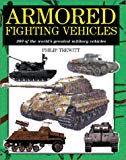 Armored Fighting Vehicles: 300 of the World’s Greatest Military Vehicles |
Starting with the crude and unreliable tanks that clashed on the Western Front in World War I, roll through years and on to the vehicles of World War II, such as the Panzer IV, Panther, Tiger, Sherman, and T-34, and right up to the most recent fighting machines, including the Abrams and Challenger, and Bradley and Warrior infantry tanks. 300 in all. |
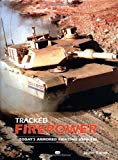 Tracked Firepower: Today’s Armored Fighting Vehicles |
Lethal firepower and an impressive array of modern capabilities take you into the front lines of battle! The spearhead of today’s battle groups, tracked vehicles are fully equipped with global positioning systems, inertial position navigation systems, and single channel ground/airborne radio systems to allow them to respond rapidly to ever-changing tactical situations. See these sophisticated systems on full alert commanding today’s fighting tanks and infantry vehicles. |
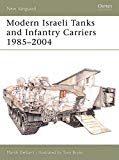 Modern Israeli Tanks & Infantry Carriers 1985-2004 |
|
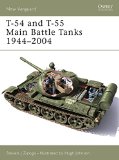 T-54 and T-55 Main Battle Tanks 1944-2004 |
|
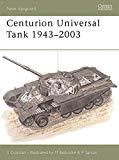 Centurion Universal Tank 1943-2003 |
|
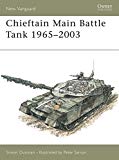 New Vanguard 80: Chieftain Main Battle Tank 1965-2003 |
The concept of the Main Battle Tank emerged from the Centurion Universal tank that was developed at the end of World War II. Development of its successor began as early as 1951. The Chieftain incorporated significant innovations including a reclining driver position and two-piece ammunition for greater survivability. The tank entered service in 1967 and was the heaviest armed and armored MBT within the NATO alliance. The Chieftain saw combat during the Iran-Iraq War, with the Kuwaitis during the 1990 Iraqi invasion and with the British Army during the Gulf War of 1990-91 as special-purpose variants. This book explores the design, development and operation of one of the most influential vehicles used in modern warfare. |
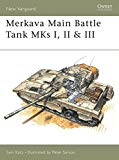 Merkava Main Battle Tank: Mks I, II and III: Chariot of Steel |
|
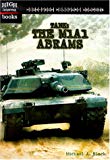 Tank: The M1A1 Abrams |
|
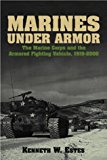 Marines Under Armor: The Marine Corps and the Armored Fighting Vehicle, 1916-2000 |
In this story of men, machines and missions, Kenneth Estes tells how the U.S. Marine Corps came to acquire the armored fighting vehicle and what it tried to do with it. The longtime Marine tank officer and noted military historian offers an insider’s view of the Corps’s acquisition and use of armored fighting vehicles over the course of several generations, a view that illustrates the characteristics of the Corps as a military institution and of the men who have guided its development. His book examines the planning, acquisition, and employment of tanks, amphibian tractors, and armored cars and explores the ideas that led to the fielding of these weapons systems along with the doctrines and tactics intended for them, and their actual use in combat.
Drawing on archival resources previously untouched by researchers and interviews of both past and serving crewmen, Estes presents a unique and unheralded story that is filled with new information and analysis of the armored vehicles, their leaders, and the men who drove these steel chariots into battle. Such authoritative detail and documentation of the decisions to acquire, develop, and organize armored units in the U.S. Marine Corps assures the book’s acknowledgement as a definitive reference. |
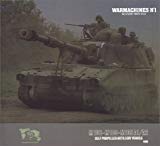 Warmachines No.1 : M108-M109-M109 A1/A2 |
An excellent reference source for the U.S. Army’s self propelled artillery piece, this book gives a history of the vehicle and its service in many of the world’s militaries. Geared toward the serious military scale modeler, each detail photograph is captioned with detailed descriptions, covering such details as differences between variants, interior details, exterior details, power plant, armament, ammunition, maintenance, stowage, service, etc. This volume set the standard for comprehensive detailed coverage that would become legendary in the military scale modeling world. |
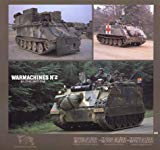 Warmachines No.2 : M113/A2-M106 A1/A2-M5777 A1/A2 |
The second installment of the WARMACHINES series, this edition is part one of two that cover the M113 Armored Personnel Carrier and its variants. With amazing detail color photos, part one covers in-depth the M113 A1 and A2 Armored Personnel Carrier, the M113 Medevac Vehicle, the M106 A1 and A2 107mm Mortar Carrier, and the M577 Armored Command Post. Such features as full interior and exterior details, powerplants, suspension, tools & equipment, stowage, armament, ammunition, and more are meticulously displayed and described. |
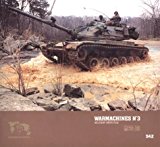 Warmachines No.3 : M60 A3 |
The third installment of the WARMACHINES series, this edition covers in depth the M60 A3 “PATTON” Main Battle Tank of the U.S. Army and U.S. Marine Corps. Such features as the fighting compartment, driving compartment, powerplant, suspension, auxiliary equipment, armament, ammunition, stowage, add-on armor, and more are beautifully photographed and described in detail. |
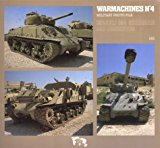 Warmachines No.4 : Israeli M4 Sherman and Derivatives |
The fourth installment in the WARMACHINES series, this edition covers the versions of the M4 “SHERMAN” tank in Israeli service. Versions covered include the following: M4A2, M4A1 105mm Howitzer, M50 “SUPER SHERMAN,” M51 “ISHERMAN,” M4 Armored Engineer Vehicle with M1 bulldozer blade, M4 “CRAB” Mine Clearing Tank, both early and late types M4 “SHERMAN” Ambulance, M74 Recovery Vehicle (M32 modification), M4 “SHERMAN,” “LIVE TARGET,” “EYAL” Observation Tank, 290mm Rocket Launcher, “SHERMAN” with 75mm AMX-13 Turret, M4 Personnel Carrier/Command Vehicle, and the 155mm M50 Self Propelled Artillery Vehicle. Along with detailed description captions, this book covers the history of the “SHERMAN” in service with the IDF. |
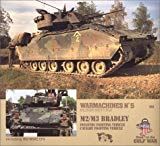 Warmachines No. 5 : M2/M3 Bradley Infantry Fighting Vehicle, Cavalry Fighting Vehicle |
This fifth installment in the WARMACHINES series deals with the M2/M3 “BRADLEY” Armored Fighting Vehicle, including the M3A2 Cavalry Fighting Vehicle. Used in the Gulf War by U.S. Forces, the “BRADLEY” is extensively photographed and described in-depth in this valuable photo reference. The history of the vehicle is covered, as well as such details as suspension, powerplant, armament, ammunition, interior fighting compartment, stowage, camouflage, and exterior hull details. |
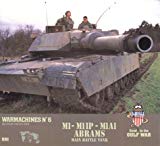 Warmachines No.6: M1 - M1IP - M1A1 Abrams Main Battle Tank |
The sixth installment in the WARMACHINES series, this volume covers in depth the details of the formidable M1 “ABRAMS” Main Battle Tank. Along with a history of the vehicle, such features as the suspension, tracks, armor protection, powerplant, armament, ammunition, fighting compartment, driving compartment, maintenance, stowage, exercises, and more are all covered with amazing detail photographs and drawings. |
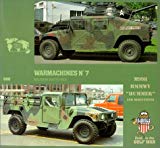 Warmachines No.7: M998 HMMWV “Hummer” and Derivatives |
This is the seventh installment in the WARMACHINES series, covering details of the M998 “HUMMER” Cargo/Troop Carrier, the M1025 & M1026 Armored Armament Carrier, the M966 Armored TOW Carrier, the M996 2 Litter Armored Ambulance, the M997 4-Litter Armored Ambulance, the M1037 Shelter Carrier, and the M998 “STINGER” Carrier. Used extensively in the 1991 Gulf War, this vehicle is well documented in this publication with excellent photographs of details such as radio equipment, powerplant, suspension, driver’s controls, cargo bed, armament, ammunition, stowage, field exercises, and field conversions. Includes wartime photos from the Persian Gulf. |
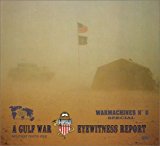 Warmachines No.8: a Gulf War Eyewitness Report |
The eighth installment in this series, this special edition deviates from the regular format by focusing entirely on various vehicles and equipment utilized by U.S. Forces serving in the Persian Gulf during Operation Desert Storm. All of the photographs in the book were taken by members of the U.S. Army serving with the 131st Engineers, a combat support equipment company of the Vermont Army National Guard. The photographs vividly portray the unique atmosphere experienced by U.S. Armed forces in the desert war. Unique depictions of the fighting men and their equipment are portrayed in combat service, showing such details as camouflage, maintenance, weathering, battle damage, and captured equipment. Some of the fighting vehicles covered include M577 Forward Control Vehicles, M113 Armored Personnel Carriers, M3 Bradley Armored Cavalry Vehicles, M1 Abrams Main Battle Tanks, Heavy Expanded Mobility Tactical Trucks (HEMTT), M109 Self Propelled Howitzers, M270 Multiple Launch Rocket Systems (MLRS), M88 Armored Recovery Vehicles, and damaged, destroyed, and captured Iraqi equipment like the Russian-built T-72 and T-55 tanks. |
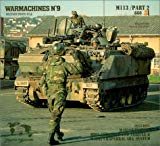 Warmachines No. 9 : M163 A1/A2 Vulcan, M901 A2 Tow, M48 A2 Chaparral |
This ninth installment in the very insightful WARMACHINES series is the second volume dedicated to variants of the prolific M113 family of armored vehicles. Carrying on the Verlinden tradition of presenting high quality color detail photographs, this book takes a close look at the details of the M163 Vulcan Air defense Artillery Gun, the M901 Hammerhead Improved TOW Vehicle, and the M48 Chaparral Improved Air Defense Guided Missile System. |
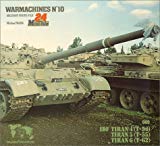 Warmachines No.10 : IDF T54, T-55, T-62 |
This tenth edition of the WARMACHINES series initiates the special 24 page mini-file, which utilizes the comparatively fewer available photographs to document a worthy subject. Following the many wars fought by the Israeli Defence Forces (IDF), large quantities of captured enemy equipment were pressed into Israeli service following extensive modifications. The vehicles in question covered in this unique publication include the Soviet-built T-54, T-55, and T-62 Main Battle Tanks, which, after modifications by the IDF Ordnance Corps, were designated as the Tiran 4, Tiran 5, and Tiran 6, respectively. Such modifications included communications equipment upgrades, stowage modifications, armament replacement, and of course, new painting and markings. Most of the photographs in this book were taken at the Armored Corps museum at Latrun in Israel. |
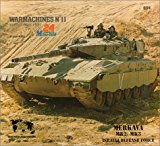 Warmachines No.11 : Merkava MK2/MK3, Israeli Defense Force |
|
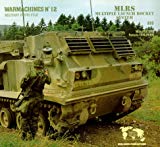 Warmachines No.12: MLRS: Multiple Launch Rocket System |
This twelfth installment in the WARMACHINES series takes a revealing look at the details of the Multiple Launch Rocket System (MLRS). The beautiful full color photography contained in this book captures details such as suspension, cab interior, access panels, rocket cage assembly, hoist mechanism, launcher drive system, rocket pods, tilting cab, and field maintenance scenarios. The MLRS in German service, as well as those serving with the U.S. Army in the Persian Gulf during Operation Desert Storm are photographed in stunning detail to ensure comprehensive coverage of this very reliable and cost-effective artillery weapon. |
| Warmachines No.13 : On the Road to Kuwait, Marines in the Gulf |
This special thirteenth installment in the WARMACHINES series takes a look at Operation Desert Storm through the camera lenses of members of 3rd Platoon, Alpha Company, 8th Marine Tank Battalion. In these pages we see the life experienced by U.S. Troops while pushing their way into Iraqi-occupied Kuwait in 1991. We see how they ate, slept, showered, played, and fought in the desert. Many useful photographs appear of U.S. equipment in action and undergoing maintenance, as well as the rare U.S. casualty, and captured and destroyed Iraqi equipment. |
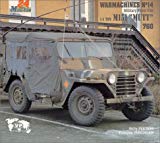 Warmachines No.14 : 1/4 Ton M151 Mutt |
This fourteenth installment in the WARMACHINES series is the third of the special 24 page mini-files which utilizes the comparatively few available photographs to document a worthy subject, in this case the 1/4 ton M151 Mutt. This book benefits the reader by providing detailed color photographs of the Mutt in field conditions, from the barracks parking lot, to deplaning from a C-130 Hercules, to undergoing an engine change, to serving with the IDF (Israeli Defense Forces). Many details are revealed in the photographs, including engine, radios, batteries, hard-top kits, soft tops, trailers, and more. This book is extremely useful to scale modelers wishing to improve the Tamiya and Academy kits, as well as to military enthusiasts. |
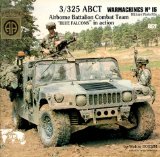 Warmachines No.15: 3/325 ABCT Airorne Battalion Combat Team “Blue Falcons” in Action |
This fifteenth installment in the WARMACHINES series focuses on the operations of the paratroopers of the 3rd/325th ABCT (Airborne Battalion Combat Team Blue Falconsduring practice exercises. This book provides a rare glimpse of such operations with beautiful full color photography. Excellent coverage of such things as parachuting, air-drops of vehicles and equipment, securing landing zones., concealment, ambush positions, and much more. Excellent details of vehicles and equipment, like the M102 105mm Field Howitzer, the M998 hummer, TOW missile launchers, and more, abound, and make for handy reference. |
 Tracked Firepower: Today’s Armored Fighting Vehicles |
Lethal firepower and an impressive array of modern capabilities take you into the front lines of battle! The spearhead of today’s battle groups, tracked vehicles are fully equipped with global positioning systems, inertial position navigation systems, and single channel ground/airborne radio systems to allow them to respond rapidly to ever-changing tactical situations. See these sophisticated systems on full alert commanding today’s fighting tanks and infantry vehicles. |